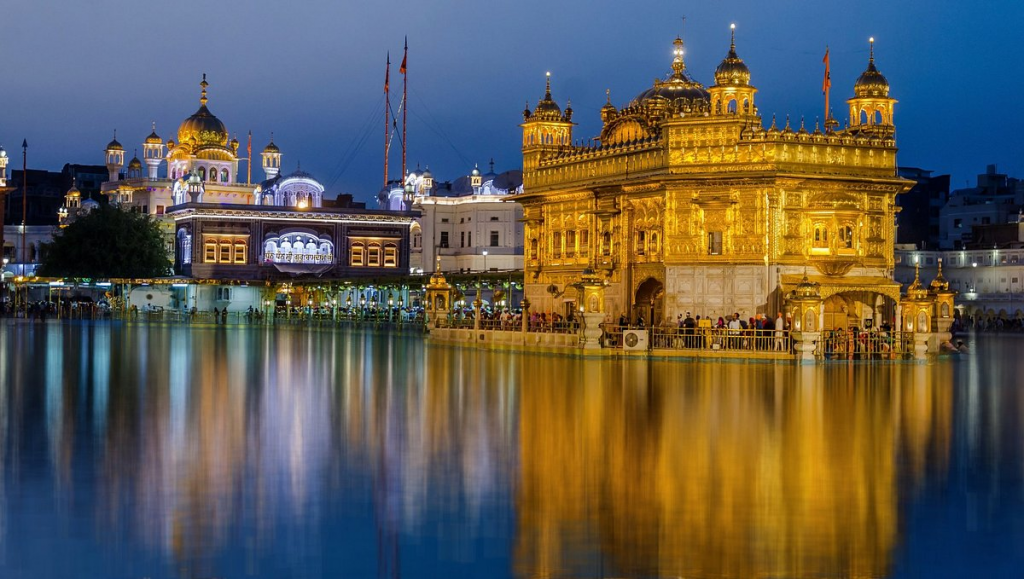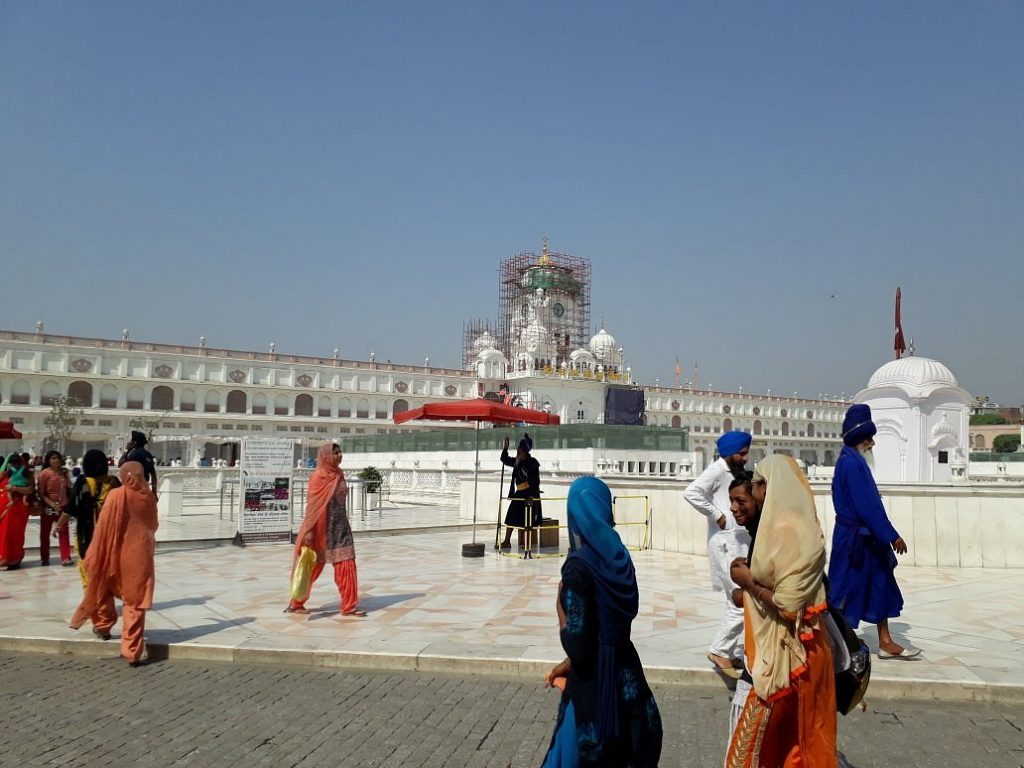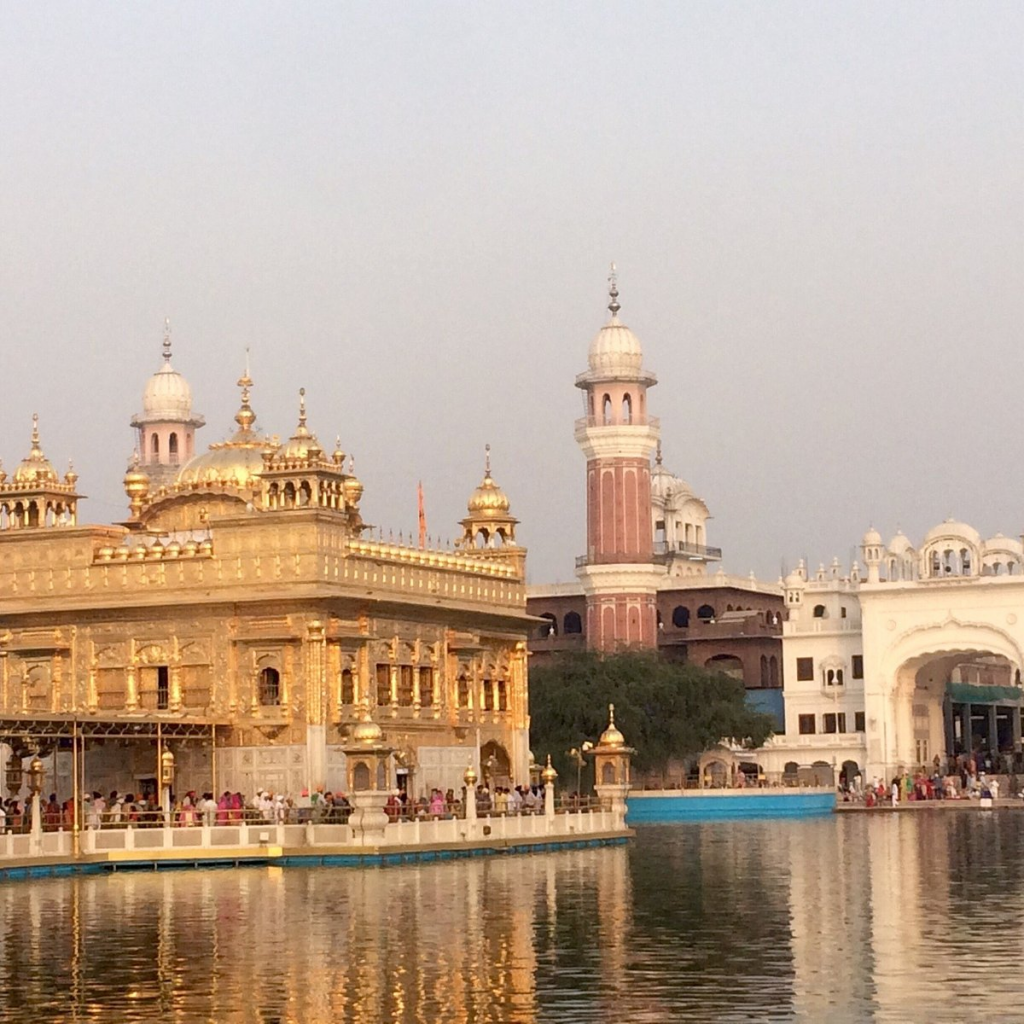Source of all Images in this Blog-post : Google Images : ‘Google Image Search’ will reveal the multiple sources of every single image shared in this Blog. For more details, kindly see ‘Disclaimer‘
The Golden Temple, also known as Harmandir Sahib, meaning “Abode of God” or Darbār Sahib, meaning “Exalted Court”, is a Gurdwara located in the city of Amritsar, in the Indian state of Punjab. It is the preeminent spiritual site of Sikh Faith.

The Gurdwara is built around a man-made pool (Sarovar) that was completed by the fourth Sikh Guru, Guru Ram Das in 1577. Guru Arjan, the fifth Guru of Sikhism, requested Sai Mir Mian Mohammed, a Muslim Pir of Lahore, to lay its foundation stone in 1589.

In 1604, Guru Arjan placed a copy of the Adi Granth in Harmandir Sahib. The Gurdwara was repeatedly rebuilt by the Sikhs after it became a target of persecution and was destroyed several times by the Mughal and invading Afghan armies.

Maharaja Ranjit Singh after founding the Sikh Empire, rebuilt it in marble and copper in 1809, overlaid the Sanctum with gold foil in 1830. This has led to the name ‘The Golden Temple’.


The Golden Temple is spiritually the most significant shrine in Sikhism. In the early 1980s, the Gurdwara became a center of conflict between the Indian government led by Indira Gandhi, some Sikh groups and a faithful movement led by Jarnail Singh Bhindranwale seeking to create a new nation named Khalistan.

In 1984, Indira Gandhi sent in the Indian Army as part of Operation Blue Star, leading to deaths of over 1,000 Sikh soldiers and civilians, as well as causing much damage to the Gurdwara and the destruction of Akal Takht. The Gurdwara complex was rebuilt again after the 1984 damage.

The Golden Temple is an open house of worship for all men and women, from all walks of life and faith. It has a square plan with four entrances, has a circumambulation path around the pool.

The complex is a collection of buildings around the Sanctum and the pool. One of these is Akal Takht, the chief center of religious authority of Sikhism.

Additional buildings include a clock tower, the offices of Gurdwara Committee, a Museum and a Langar – a free Sikh community run kitchen that serves a simple vegetarian meal to all visitors without discrimination. Over 100,000 people visit the holy shrine daily for worship.

The Gurdwara complex has been nominated as a UNESCO World Heritage Site, and its application is pending on the tentative list of UNESCO.
